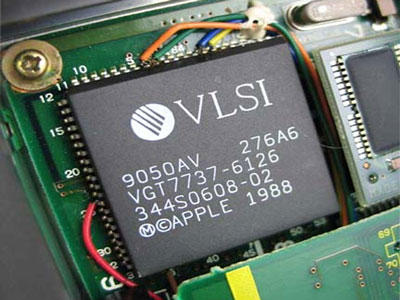What is VLSI?
VLSI (Very-large-scale integration) is a process that means to create integrated circuits by combining thousands of transistor-based circuits into a single chip. VLSI began in the 1970s when complex semiconductor and communication technologies were being developed. The microprocessor is a VLSI device. Nearly all modern chips employ VLSI architectures.
The first semiconductor chips held two transistors each. Subsequent advances added more and more transistors, and, as a consequence, more individual functions or systems were integrated over time. Current technology has moved far past this mark and today’s microprocessors have many millions of gates and billions of individual transistors.
This is the field which involves packing more and more logic devices into smaller and smaller areas.Thanks to the FPGA Board and its VLSI, circuits that would have taken boardfuls of space can now be put into a small space few millimeters across! This has opened up a big opportunity to do things that were not possible before. VLSI circuits are everywhere … your computer, your car, your brand new state-of-the-art digital camera, the cell-phones, and what have you. All this involves a lot of expertise on many fronts within the same field, which we will look at in later sections.
A typical digital design flow is as follows:
Specification
Architecture
RTL Coding
RTL Verification
Synthesis
Backend
Tape Out to Foundry to get end product….a wafer with repeated number of identical Ics.
A typical analog design flow is as follows:
In case of analog design, the flow changes somewhat.
Specifications
Architecture
Circuit Design
SPICE Simulation
Layout
Parametric Extraction / Back Annotation
Final Design
Tape Out to foundry.
1. Analog:
Small transistor count precision circuits such as Amplifiers, Data converters, filters, Phase Locked Loops, Sensors etc.
2. ASICS or Application Specific Integrated Circuits:
Progress in the fabrication of IC’s has enabled us to create fast and powerful circuits in smaller and smaller devices. This also means that we can pack a lot more of functionality into the same area. The biggest application of this ability is found in the design of ASIC’s. These are IC’s that are created for specific purposes – each device is created to do a particular job, and do it well. The most common application area for this is DSP – signal filters, image compression, etc. To go to extremes, consider the fact that the digital wristwatch normally consists of a single IC doing all the time-keeping jobs as well as extra features like games, calendar, etc.
3. SoC or Systems on a chip:
These are highly complex mixed signal circuits (digital and analog all on the same chip). A network processor chip or a wireless radio chip is an example of an SoC.






